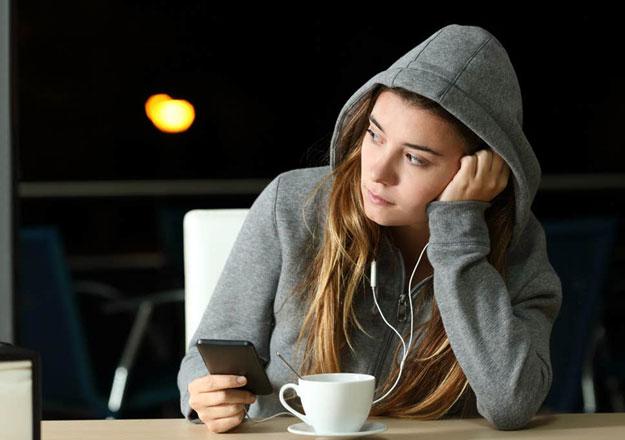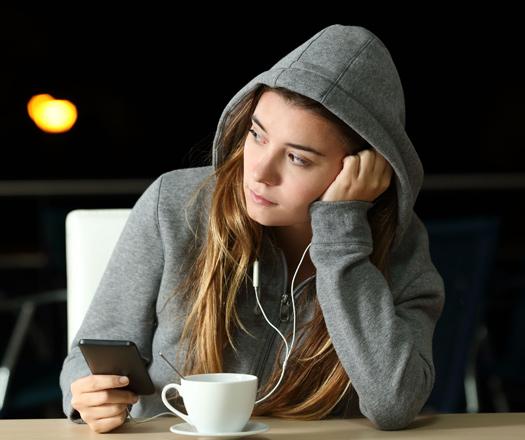You are here
People exposed to violence end up isolated and lonely, with chronic health problems
By Star Tribune (Minneapolis) (TNS) - Dec 23,2019 - Last updated at Dec 23,2019

AFP photo
CHICAGO — Christopher Lee was 15 years old when he was shot May 14, 2016, while on his bike outside his home. He was shot in the back, arm and chest, and was in the hospital for six days, where he had two surgeries in addition to staples and stitches. To this day, he said, he still has a bullet in his chest.
And he’s still not over the shooting. The 18-year-old doesn’t play basketball in parks anymore — only in gyms. Taking the CTA makes him nervous. And when friends invite Lee to a party, he declines.
“I definitely say no to those,” he said. “People shoot up house parties. I’d rather stay home and watch TV or something.”
Lee’s experience of isolation after a violent incident is not unusual, according to two recent University of Chicago studies co-authored by University of Chicago Medicine social epidemiologist Dr Elizabeth Tung.
In a study that looks at social isolation, loneliness and exposure to violence in urban adults, data show that the more violence people experienced in their own community, the lonelier they were likely to be. The greatest loneliness was found among people who were exposed to community violence and who screened positive for post-traumatic stress disorder.
Couple that information with the fact that loneliness is a growing health concern in the nation, and it would appear that violence that leads to loneliness can also lead to higher mortality, Tung said.
“Throughout the course of talking with patients, I started hearing patients tell me that they didn’t want to join a walking group because they were afraid to walk in their neighbourhood,” she said. “Some of my older patients would say they don’t like to go out after dark, so pretty much once the sun goes down, they feel like they’re kind of landlocked in their homes. I started to hear all these ways violence is making it hard for them to manage their health, get out and be active in their communities.”
Conversations between patient and physician developed into in-person surveys of more than 500 adults (ages 18 to 80; most 50 and older), living in communities with high rates of violent crime, and in predominantly racial and ethnic minority groups.
Tung’s other study revealed data that connected hypervigilance (a heightened emotional state of always feeling on guard) among urban residents affected by community and police violence with chronic health conditions like hypertension, cardiovascular disease, memory impairment and anxiety disorders.
The study found a strong association between hypervigilance and exposure to police violence, more than community violence. Tung, the principal investigator of the studies, said living in areas where violence is prevalent, and being in continual “fight or flight” mode takes years off a person’s life.
“We were really interested in the blood pressure results for hypervigilance because there is a known link to fight or flight,” Tung said. “We actually did see people who scored higher on hypervigilance also had higher systolic blood pressure measurements. And the effects weren’t small — essentially the people in the highest group for hypervigilance had a higher systolic blood pressure by about 9mm mercury, which is proportional to the increase in other studies where we see almost a 50 per cent greater risk of death from heart disease or stroke.”
The results of the study were published in the policy journal Health Affairs.
Tung said the results hold regardless of age.
Stephanie Steele, a licensed clinical social worker who divides her time between students at Marshall Metro High School and at Collins Academy High School in Chicago’s West Side, has seen the effects of Tung’s studies in real time with her students.
She said she constantly encourages students to do mindfulness activities and meditation to help with the issues of isolation and hypervigilance.
“It definitely takes a physical toll on their bodies and an emotional toll on them,” she said.
“But no matter what trauma work I do with students, it’s still a Band-Aid because they still continue to go through it. I think it’s definitely a symptom of PTSD, but also it comes from distrust. To witness the things that our students witness, the violence from the police, the violence from the community, what one human being is capable of doing to another human being, I think it causes a very large distrust.”
Tung’s research will continue. She said she wants her data to be shared in mental health areas, but also with primary care doctors, emergency room doctors and inpatient trauma staff, so all can have an understanding of trauma and its multidimensional effects.
As for Lee, he said he’s continuing to deal with the aftermath of his shooting and has had counselling.
“I’m not over it,” he said. “But I’m dealing with it because I can’t stay cooped up. I gotta live a life, but it’s hard because every day I go outside, I feel like I’m going to get killed this time. The first time you got lucky, but the second time you’re going to get killed. And whatever is going on, it’s hard not to feel like that.”
By Darcel Rockett
Related Articles
Americans are feeling increasingly isolated, and healthcare officials are warning that can lead to an increased risk of death.“We see higher
Volunteering at least two hours a week may go a long way towards helping to ease feelings of loneliness and social isolation, a study of rec
NEW YORK — Anxiety, depression, self-harm and even suicide: A growing number of children in the United States are struggling with their ment


















